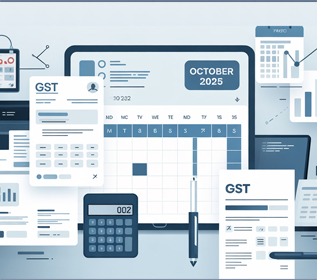Anyone who has ever filed a GST return knows there’s a little room for mistakes. A missed invoice, an unclaimed ITC, or an incorrect entry can easily become permanent.
That’s what makes October a decisive month for GST compliance. It’s the period when businesses reconcile their books, match ITC, and resolve mismatches before the financial year formally closes for corrections.
A Change Many Still Overlook
When the Finance Act, 2022, amended Section 16(4) of the CGST Act, it offered taxpayers something truly valuable — additional time.
Earlier, the last date to claim Input Tax Credit (ITC) or rectify any invoice-related entries was tied to the September GSTR-3B filing due date. the amended law now extends this timeline to 30th November of the following financial year, offering taxpayers nearly two additional months of flexibility.
What the Law Actually Says
A registered person shall not be entitled to claim input tax credit in respect of any invoice or debit note after the 30th day of November following the end of the financial year to which such invoice or debit note pertains, or the date of furnishing the relevant annual return, whichever is earlier.
— Section 16(4), CGST Act (Amended via Finance Act, 2022; Notification No. 18/2022–CT dated 28-09-2022)
Effective from 1 October 2022, this rule applies to FY 2022–23 and onwards.
Key Compliance Timelines for FY 2024–25
| Compliance Area | Period | Legal Cut-off | Practical Meaning |
| Claim missed ITC / rectify entries | FY 2024–25 | 30 Nov 2025 | After this, ITC for FY 24–25 lapses permanently |
| Amend invoices in GSTR-1 | FY 2024–25 | 30 Nov 2025 | Correction window closes thereafter |
| File annual return (GSTR-9/9C) | FY 2024–25 | 31 Dec 2025 (expected) | Final cross-verification with books and returns |
Actions to Complete Before Filing Your October 2025 Returns
Consider your October GSTR-3B filing as the final opportunity to close your books for FY 2024–25. This is the time to pause, reconcile, and ensure every eligible credit is accurately reflected in your returns.
Begin by reconciling your Input Tax Credit (ITC) across three key sources — the purchase register, accounting books, and the GSTR-2B auto-statement. Any mismatch among these can lead to the permanent loss of credit later. Equally important is to follow up with your suppliers and ensure that all pending invoices are uploaded well before October, so they appear in your GSTR-2B and can be claimed without dispute.
Next, review your outward supplies reported in GSTR-1 to identify any errors or omissions. Making corrections at this stage can save you from prolonged reconciliations or departmental queries during annual return filing. If any reverse charge liabilities remain pending, ensure those payments are cleared and the corresponding ITC is claimed promptly.
Don’t forget to remove ineligible credits, including those blocked under Section 17(5), and make the necessary reversals. Finally, ensure your books of accounts are closed and finalized before November 2025, as any unreconciled or missed ITC thereafter will lapse permanently.
In short, treat October 2025 as your actual GST year-end. A few proactive steps this month can save you substantial tax costs, compliance headaches, and the regret of losing eligible credits later.
Key Takeaway
Even though the law extends the deadline to 30 November, don’t be lulled into a false sense of security. The real hurdles – system congestion, reconciliation delays, and vendor dependencies, intensify as deadlines approach. So, October 2025 is the critical month to finalize your GST compliance for FY 2024–25. Take this time to reconcile your accounts thoroughly, correct any discrepancies, and close your books accurately. Reconcile early, correct wisely, and close cleanly — because once November ends, any unclaimed ITC will be lost forever. Don’t wait until the last minute; acting now ensures you maximize your eligible credits and avoid unnecessary compliance challenges.
